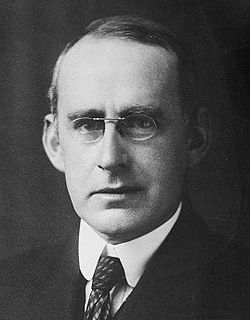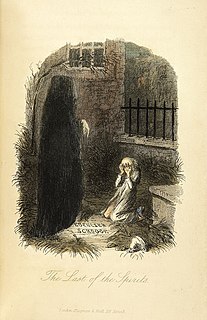 W
WAbsolute space and time is a concept in physics and philosophy about the properties of the universe. In physics, absolute space and time may be a preferred frame.
 W
WThe arrow of time, also called time's arrow, is the concept positing the "one-way direction" or "asymmetry" of time. It was developed in 1927 by the British astrophysicist Arthur Eddington, and is an unsolved general physics question. This direction, according to Eddington, could be determined by studying the organization of atoms, molecules, and bodies, and might be drawn upon a four-dimensional relativistic map of the world.
 W
WIn philosophy, becoming is the possibility of change in a thing that has being, that exists.
 W
WImpermanence, also known as the philosophical problem of change, is a philosophical concept addressed in a variety of religions and philosophies. In Eastern philosophy it is best known for its role in the Buddhist three marks of existence. It is also an element of Hinduism. In Western philosophy it is most famously known through its first appearance in Greek philosophy in the writings of Heraclitus and in his doctrine of panta rhei. In Western philosophy the concept is also called becoming.
 W
WJohn William Dunne was a British soldier, aeronautical engineer and philosopher. As a young man he fought in the Second Boer War, before becoming a pioneering aeroplane designer in the early years of the 20th century. Dunne worked on automatically stable aircraft, many of which were of tailless swept wing design, to achieve the first certified stable aircraft. He later developed a new approach to dry fly fishing before turning to philosophy, where he achieved some pre-eminence and literary influence through his theory on the nature of time and consciousness, called "serialism".
 W
WDuration is a theory of time and consciousness posited by the French philosopher Henri Bergson. Bergson sought to improve upon inadequacies he perceived in the philosophy of Herbert Spencer, due, he believed, to Spencer's lack of comprehension of mechanics, which led Bergson to the conclusion that time eluded mathematics and science. Bergson became aware that the moment one attempted to measure a moment, it would be gone: one measures an immobile, complete line, whereas time is mobile and incomplete. For the individual, time may speed up or slow down, whereas, for science, it would remain the same. Hence Bergson decided to explore the inner life of man, which is a kind of duration, neither a unity nor a quantitative multiplicity. Duration is ineffable and can only be shown indirectly through images that can never reveal a complete picture. It can only be grasped through a simple intuition of the imagination.
 W
WEternal return is a concept that the universe and all existence and energy has been recurring, and will continue to recur, in a self-similar form an infinite number of times across infinite time or space.
 W
WAn Experiment with Time is a book by the British soldier, aeronautical engineer and philosopher J. W. Dunne about his precognitive dreams and a theory of time which he later called "Serialism". First published in March 1927, the book was widely read. Although never accepted by mainstream science, it has influenced imaginative literature ever since. Dunne published four sequels: The Serial Universe, The New Immortality, Nothing Dies and Intrusions?
 W
WFrom Eternity to Here: The Quest for the Ultimate Theory of Time is a non-fiction book by American theoretical physicist Sean M. Carroll. The book was initially released on January 7, 2010 by Dutton.
 W
WIn philosophy, the phrase further facts refers to facts that do not follow logically from the physical facts of the world. Reductionists who argue that at bottom there is nothing more than the physical facts thus argue against the existence of further facts. The concept of further facts plays a key role in some of the major works in analytic philosophy of the late 20th century, including in Derek Parfit's Reasons and Persons, and David Chalmers's The Conscious Mind.
 W
WThe future is the time after the present. Its arrival is considered inevitable due to the existence of time and the laws of physics. Due to the apparent nature of reality and the unavoidability of the future, everything that currently exists and will exist can be categorized as either permanent, meaning that it will exist forever, or temporary, meaning that it will end. In the Occidental view, which uses a linear conception of time, the future is the portion of the projected timeline that is anticipated to occur. In special relativity, the future is considered absolute future, or the future light cone.
 W
WThe grandfather paradox is a paradox of time travel in which inconsistencies emerge through changing the past. The name comes from the paradox's description: a person travels to the past and kills their own grandfather before the conception of their father or mother, which prevents the time traveller's existence. Despite its title, the grandfather paradox does not exclusively regard the contradiction of killing one's own grandfather to prevent one's birth. Rather, the paradox regards any action that alters the past, since there is a contradiction whenever the past becomes different from the way it was.
 W
WJohn McTaggart Ellis McTaggart (1866–1925) was an English idealist metaphysician. For most of his life McTaggart was a fellow and lecturer in philosophy at Trinity College, Cambridge. He was an exponent of the philosophy of Georg Wilhelm Friedrich Hegel and among the most notable of the British idealists. McTaggart is known for "The Unreality of Time" (1908), in which he argues that time is unreal. The work has been widely discussed through the 20th century and into the 21st.
 W
WThe past is the set of all events that occurred before a given point in time. The past is contrasted with and defined by the present and the future. The concept of the past is derived from the linear fashion in which human observers experience time, and is accessed through memory and recollection. In addition, human beings have recorded the past since the advent of written language. The first known use of the word "past" was in the fourteenth century; it developed as the past participle of the middle English verb passen meaning "to pass."
 W
WPhysical cosmology is a branch of cosmology concerned with the study of cosmological models. A cosmological model, or simply cosmology, provides a description of the largest-scale structures and dynamics of the universe and allows study of fundamental questions about its origin, structure, evolution, and ultimate fate. Cosmology as a science originated with the Copernican principle, which implies that celestial bodies obey identical physical laws to those on Earth, and Newtonian mechanics, which first allowed those physical laws to be understood. Physical cosmology, as it is now understood, began with the development in 1915 of Albert Einstein's general theory of relativity, followed by major observational discoveries in the 1920s: first, Edwin Hubble discovered that the universe contains a huge number of external galaxies beyond the Milky Way; then, work by Vesto Slipher and others showed that the universe is expanding. These advances made it possible to speculate about the origin of the universe, and allowed the establishment of the Big Bang theory, by Georges Lemaître, as the leading cosmological model. A few researchers still advocate a handful of alternative cosmologies; however, most cosmologists agree that the Big Bang theory best explains the observations.
 W
WThe Physics is a named text, written in ancient Greek, collated from a collection of surviving manuscripts known as the Corpus Aristotelicum, attributed to the 4th-century BC philosopher Aristotle.
 W
WThe present is the time that is associated with the events perceived directly and in the first time, not as a recollection or a speculation. It is a period of time between the past and the future, and can vary in meaning from being an instant to a day or longer.
 W
WCharles Bernard Renouvier was a French philosopher. He considered himself a "Swedenborg of history" who sought to update the philosophy of Kantian liberalism and individualism for the socio-economic realities of the late nineteenth century, and influenced the sociological method of Émile Durkheim.
 W
WThe Singular Universe and the Reality of Time: A Proposal in Natural Philosophy is a book about cosmology, philosophy of time, metaphysics and scientific naturalism by the American theoretical physicist Lee Smolin and the Brazilian philosopher Roberto Mangabeira Unger. The authors argue that the current crisis in cosmology is a result of physicists making the wrong commitments to universalizing local experiments and to a block universe. They suggest instead that new research projects would be revealed if we took seriously the idea of one, and only one, universe as well as the reality of our experience of time. This new paradigm, they say, would also give rise to the revolutionary notion that the laws of nature might not be immutable. The book was initially published by Cambridge University Press on December 8, 2014.
 W
WTime is the indefinite continued progress of existence and events that occur in an apparently irreversible succession from the past, through the present, into the future. It is a component quantity of various measurements used to sequence events, to compare the duration of events or the intervals between them, and to quantify rates of change of quantities in material reality or in the conscious experience. Time is often referred to as a fourth dimension, along with three spatial dimensions.
 W
WTime Reborn: From the Crisis in Physics to the Future of the Universe is a 2013 book by the American theoretical physicist Lee Smolin.
 W
WThe Japanese Buddhist word uji (有時), usually translated into English as Being-Time, is a key metaphysical idea of the Sōtō Zen founder Dōgen (1200-1253). His 1240 essay titled Uji, which is included as a fascicle in the Shōbōgenzō collection, gives several explanations of uji, beginning with, "The so-called "sometimes" (uji) means: time (ji) itself already is none other than being(s) (u) are all none other than time (ji).". Scholars have interpreted uji "being-time" for over seven centuries. Early interpretations traditionally employed Buddhist terms and concepts, such as impermanence. Modern interpretations of uji are more diverse, for example, authors like Steven Heine and Joan Stambaugh compare Dōgen's concepts of temporality with the existentialist Martin Heidegger's 1927 Being and Time.
 W
WRoberto Mangabeira Unger is a Brazilian philosopher and politician. He has developed his views and positions across many fields including legal theory, philosophy and religion, social and political theory, progressive alternatives, and economics.
 W
WAlfred North Whitehead was an English mathematician and philosopher. He is best known as the defining figure of the philosophical school known as process philosophy, which today has found application to a wide variety of disciplines, including ecology, theology, education, physics, biology, economics, and psychology, among other areas.